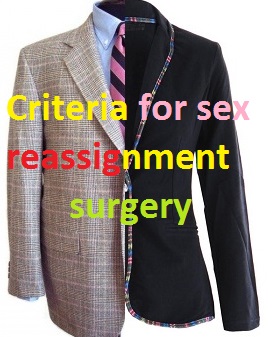Solid information is hard to come by when it relates to what health insurance plans will cover for gender reassignment surgery in California. In response to the Insurance Gender Non-Discrimination Act passed by California in 2013, some health plans have created detailed medical policies for transgender health benefits. For a variety of reasons the health insurance companies don’t make their policies readily available to the general public. I was able to locate two detailed outlines issued by Blue Shield of California relating to gender reassignment surgery.
Blue Shield gender reassignment surgery
The Blue Shield medical policy for gender reassignment surgery leans heavily on recommendations from the World Professional Association for Transgender Health guidance (WPATH). Their transgender coverage is at least nominally rooted in established and accepted definitions related to the therapeutic options for transgender individuals to successfully transition to their identified gender. Of the two Blue Shield medical policy excerpts presented, one is directed toward the member seeking services and the other supplies more technical information for the physicians and surgeons.
Criteria for gender reassignment surgery
The guiding principles for the Blue Shield health plans to consider covering sex reassignment surgery is outlined with six points from the Diagnostic and Statistical Manual of Mental Disorders-V (DSM-5).
- Criteria for the diagnosis of gender dysphoria
- A marked incongruence between one’s experienced/expressed gender and/or secondary sex characteristics
- A strong desire to be rid of one’s primary and/or secondary sex characteristics because of a marked incongruence with one’s experienced/expressed gender
- A strong desire for the primary and/or secondary sex characteristics of the other gender
- A strong desire to be of the other gender (or some alternative gender different from one’s assigned gender)
- A strong desire to be treated as the other gender
- A strong conviction that one has the typical feelings and reactions of the other gender
Authorizing medically necessary gender surgery
Before authorizing any medically necessary procedures for the treatment of gender dysphoria and ensuing gender reassignment surgery, Blue Shield lists a number of criteria that must be met. Here are summaries of the criteria. For the comprehensive list and associated notes download the files at the end of this post.
The individual is age 18 or older
Documented DSM-5 diagnosis of gender dysphoria including all of the following
Desire to live and be accepted as member of opposite sex
Transsexual identity has been present for at least 2 years
Disorder is not a symptom of another mental disorder
Disorder causes clinically significant distress or impairment
If significant medical or mental health concerns are present, they must be well controlled
Medical record documentation to support medical necessity of any of the following gender reassignment surgeries and all associated criteria
- Mastectomy – at least one letter of recommendation written from qualified mental health professional
- Hysterectomy, salpingo-oophrectomy, orchiectomy – with 12 months of continuous hormone sex reassignment therapy, recommendations from two qualified mental health professionals.
- Genital reconstructive surgeries
- Vaginectomy, metoidioplasty, scrotoplasty, urethroplasty, urethromeatoplasty, testicular prosthesis, phalloplasty (female to male)
- Vaginoplasty, penectomy, clitoroplasty, vulvulplasty (male to female)
12 months of continuous hormone sex reassignment therapy unless the individual has a medical contraindication to take hormones (may be simultaneous with real-life experience)
Real-life experience of living within desired gender role full-time for 12 months.
Regular participation with a mental/behavioral health provider or other medical professional throughout real-life experience.
Recommendations for sex reassignment surgery by two qualified mental health professionals.
Referral and Recommendations from qualified mental health providers
Blue Shield is explicit that they will only consider referrals and recommendations from mental health professionals with specific credentials. “The minimal credentials for qualified mental health professionals who work with adults presenting with gender dysphoria include a master’s degree or its equivalent or more advanced degree (e.g., Ph.D., M.D., Ed.D., D.Sc., D.S.W., or Psy.D) in clinical behavioral science field with established competence in the assessment and treatment of gender dysphoria.” Letters of recommendation for gender reassignment surgery must include the following:
- The client’s general identifying characteristics
- Results of the individuals psychosocial assessment, including any diagnoses
- The duration of the mental health professional’s relationship with the client, including the type of evaluation and therapy and counseling to date
- An explanation that the WPATH criteria for surgery have been met, and a brief description of the clinical rationale for supporting the patient’s request for surgery
- A statement that informed consent has been obtained from the patient
- A statement that the mental health professional is available for coordination of care and welcomes a phone call to establish this
Real-Life Experience
The Blue Shield medical policy also places importance on documenting that any candidate for sex reassignment surgery has lived full-time in their identified gender role for a minimum of 12 months. “Health professionals should clearly document a patient’s experience in the gender role in the medical chart, including that start date of living full-time for those who are preparing for genital surgery.”
- Communication with individuals who have related to the patient in an identity-congruent gender role
- Request documentation of legal name and/or gender-marker change, if applicable
Transgender transition guide
The Blue Shield medical policy for assessing and granting coverage for sex reassignment surgery is fairly comprehensive in its scope. The documents have a litany of different procedures that could possibly be covered and a list of cosmetic procedures that will not be covered. While the documents are technical in nature and written for medical professionals and internal Blue Shield employees evaluating requests for authorization for gender reassignment surgery, they contain important information for any transgender individual who is on the path to transition to the gender they truly identify with.
[wpdm_package id=223]
[wpdm_package id=224]
